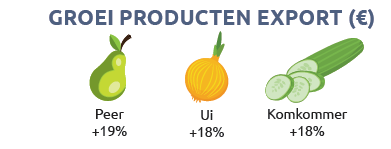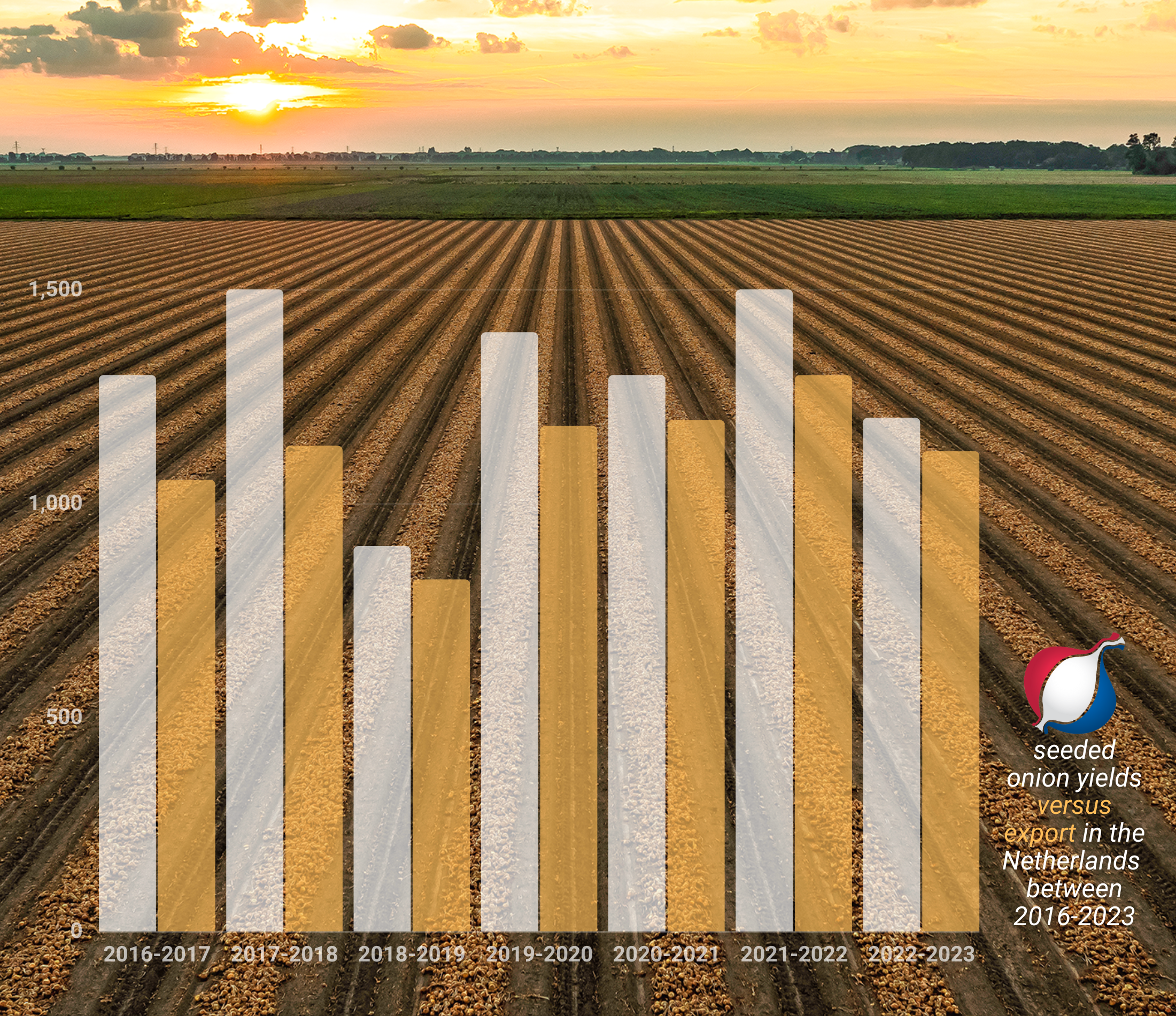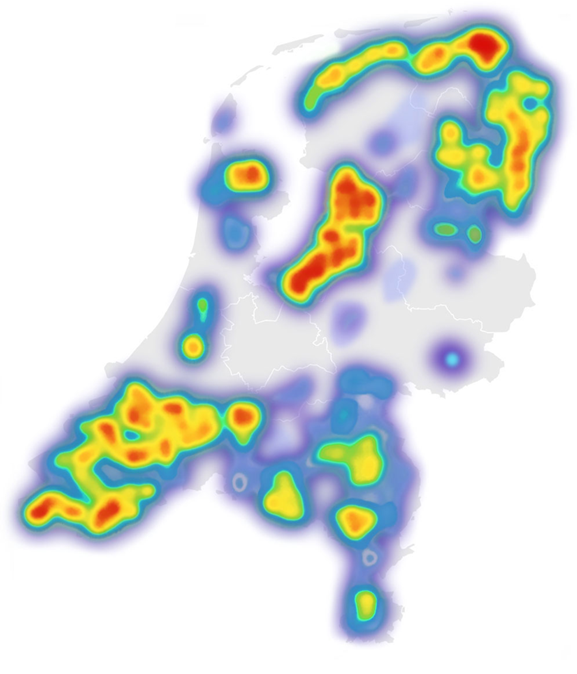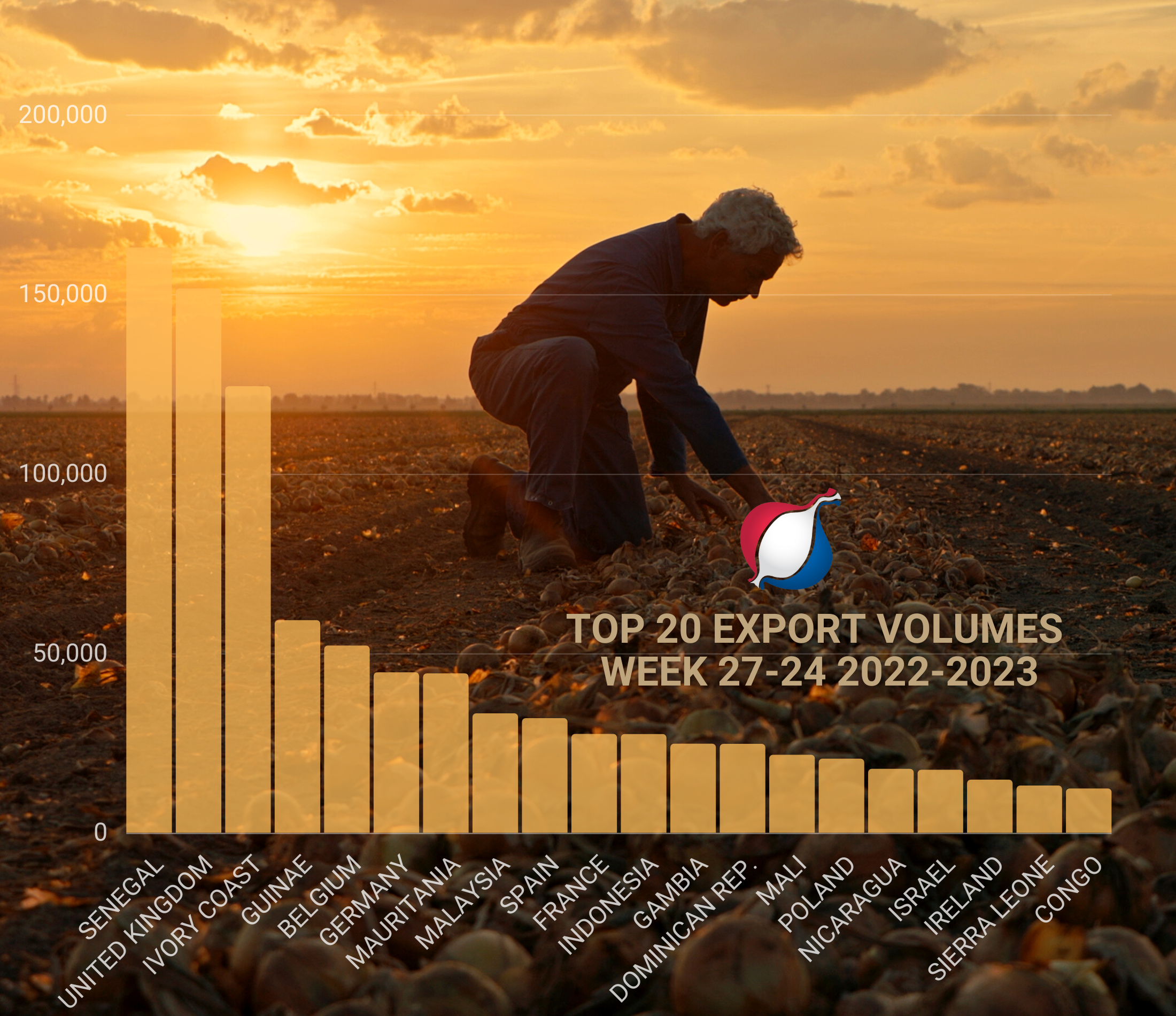Record value in Holland Onion export
With only 3 weeks to go, the 2022-2023 export season is coming to an end and will go down in the books as a memorable year. The season will certainly not reach a new record in terms of export volume, but the magical barrier of half a billion euros will almost certainly be broken for the export value. According to recent figures, the export value of Dutch onions already increased by 18% in 2022. The export volume counter has also passed the 1.1 million ton mark, which is certainly a great achievement given the fact that considerably fewer onions became available for export this season.


In the year 2022, the export value of onions already registered a growth of 18% Source: GFH
Record amounts
Record amounts have been paid for Holland Onions this season. In this millennium, growers have never been paid so much for the crispy golden-yellow Dutch onion, and that also had its downside. The always steady export growers such as Senegal, Ivory Coast, Guinea and Mauritania held back somewhat this season due to the high price of the Holland Onion, although they did remain on the market. This is because their own harvest is not sufficient and there are few alternatives to the popular vegetable that can be found on the African menu every day. This backlog was fully compensated by the neighboring European countries, which all had to contend with a lower production of the onion fields this season. For Dutch sorters and exporters, a high turnover did not automatically mean more profit. In the second half of the season, a large number of traders had to hand in what they had saved up in the first half.
Lower harvest size
It goes without saying that it was virtually impossible to match the previous export season with a 17% lower harvest size as a start. In the end, a total of 1 million tons of yellow and 0.2 million tons of red seed onions were harvested. This puts the total crop size of seed onions at 'only' 1.2 million tons, of which about 92% was available for export, so more than 1.1 million tons. This goal has been amply achieved, which means that the Holland Onion export will be at virtually the same level as the 2017-2018 export season.

Onion cultivation under pressure
Onion yields are stagnating worldwide due to climate change and the associated crop failures, but also due to a decrease in the available agricultural area and the decrease in the fertility of soils if they are insufficiently supplemented with fertilizers, organic matter and moisture. The consequences of climate change certainly apply to the province where the Holland Onion finds its birthplace: Zeeland. Zeeland onion cultivation has been under increasing pressure over the past five years. This pressure can be traced back to, among other things the associated shortage of fresh water, salinisation and increasing disease pressure. For example, very wet periods with a lot of rain are increasingly being alternated with very dry, warm periods. A shallow-rooted crop such as the onion does not like too wet conditions. Onions will then suffer from fungal diseases and bacteria and will rot during cultivation or storage. When the weather is too hot and too dry, the onions suffer from heat stress and are also plagued by thrips, the insect popularly known as 'thunder bugs'. In addition, onions cannot withstand the advancing salinization that is playing tricks on the Zeeland soil. The challenges that are now very noticeable in Zeeland are sometimes also already felt in the IJsselmeer polders.
Only 10% Zeeland onion fields
Zeeland arable farmers are increasingly opting for less risky crops, such as grains, because of the problems mentioned. This is also reflected in the area figures. The Zeeland seed onion area halved from over 6,000 hectares in 2017 to barely 3,000 hectares this season. This means that Zeeland only holds 10 percent of the national area. Five years ago this was about 30 percent. Zeeland farmers who do opt for onion cultivation are increasingly looking for ways to irrigate with fresh water. With the specific application of water by means of drip irrigation, fertilizers and trace elements can also be added, which provides additional benefits and may also make the crop more resistant to diseases and pests. In combination with new cultivation methods such as raised or bed cultivation, this offers a perspective for action with more certainty, but also means considerably higher costs.
Uireka 3.0
In Flevoland and Zeeland, but also in more and more other Dutch provinces, onion cultivation is an important part of the overall cropping plan. The Uireka research program is a unique chain project in which the entire onion sector participates. Since 2017, Uireka has focused on further improving the quality of the Holland Onion and strengthening the sustainability and resilience of Dutch onion cultivation. Almost 80% of the research program is now financed by the sector itself. Recently, first the Province of Zeeland and soon after that the Province of Flevoland also accepted the subsidy applications for Uireka 3.0, which means that the research program into sustainable onion cultivation for the period 2023-2025 is now financially fully covered.

Concentration of onion areas in the Netherlands in 2022 (source: CBS)
Subsidy of 200,000 euros
"In order to maintain the onion sector in Zeeland, it is important that we conduct research and innovate. With a subsidy of 200,000 euros, the sector is given a boost and solutions for all challenges are tested. What I particularly like about the Uireka programme of Holland Onion Association is the sharing of knowledge. The results of the research are widely distributed among growers in Zeeland, so that all onion growers can develop, from Zeeuws-Vlaanderen to Tholen.” - Jo-Annes de Bat, deputy of the Province of Zeeland.
Highly sustainable cultivation
'As the Holland Onion Association, we are very happy that both the Province of Flevoland and the Province of Zeeland have a warm heart for the onion sector and want to contribute both substantively and financially. As chairman and co-initiator of the chain-wide onion research programme Uireka, I know that the resources are used effectively. Onions and Holland belong together and cultivation is an important part of the total crop plan. Together we try to provide an answer to make onion cultivation in the Netherlands highly sustainable.’ - Gijsbrecht Gunter, chairman of Uireka and president of the Holland Onion Association.
12% less export in second half
The current export numbers show that total exports up to and including week 24 are 12% behind last season and about 6% on the season before. At the moment, the export amounts to more than 1.120 million tons, although something has changed in the top 3 compared to last season.
Great Britain climbs to second position
After years of hegemony of Senegal and Ivory Coast as the alltime favourite numbers 1 and 2, Great Britain managed to take second place this season at the expense of Ivory Coast. Britain will easily pass the 150,000 ton mark this season. The top 20 is organized a bit differently this export season anyway, because we find more European countries in it. We now find Belgium in fifth position. Our southern neighbors will probably import about 20,000 tons more this season. And that actually applies to all our neighboring countries. Poland, Germany, Spain and Portugal are well up, with Portugal recording the -proportionately- largest growth from just under 1,000 tons to almost 6,000 tons. Germany is in 7th position and climbs from 23,000 to almost 44,000 tonnes.
What is also striking is the (renewed) entry of Israel in the top 20 with more than 17,000 tons. Brazil doubled its import this season to 8,500 tonnes, but remains outside the top 20. Except for Indonesia (with a growth of more than 9%) and the Dominican Republic (with a growth of 57%), all other long-distance destinations have suffered a significant loss due to the scarce and exceptionally expensive Dutch onion this season. Nevertheless, the Holland Onion still managed to reach 130 different final destinations this export season.
